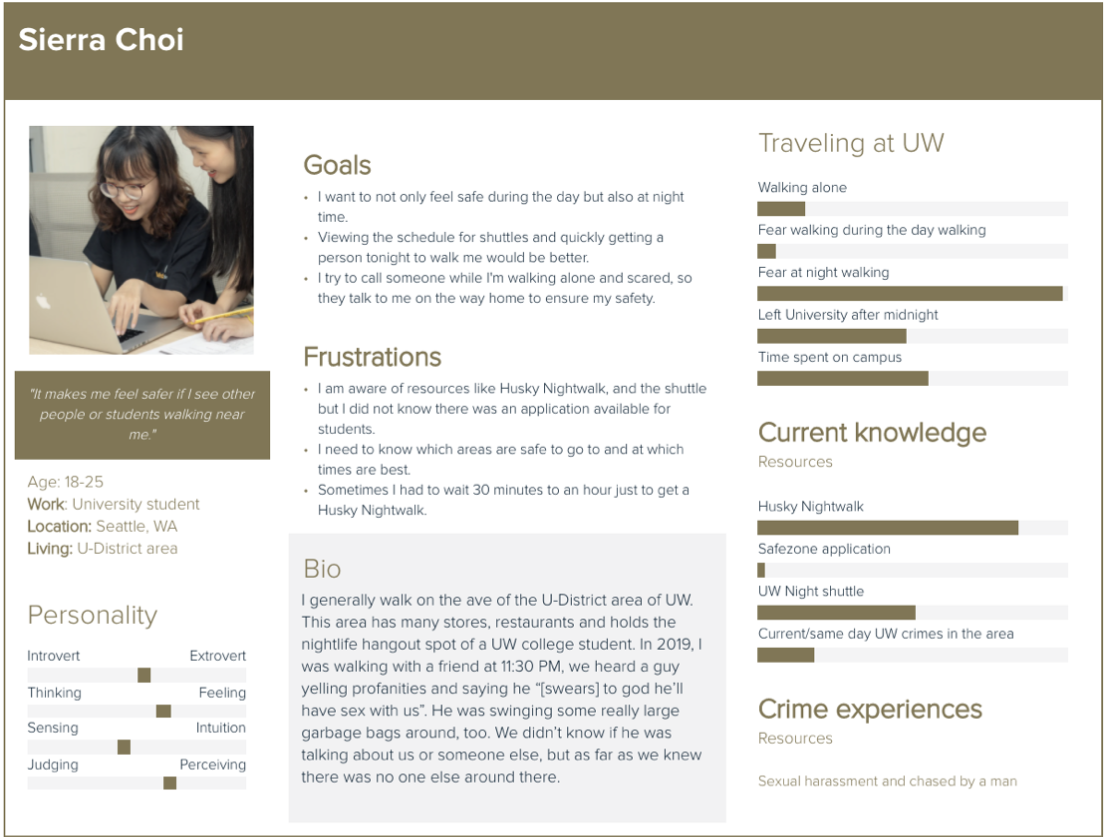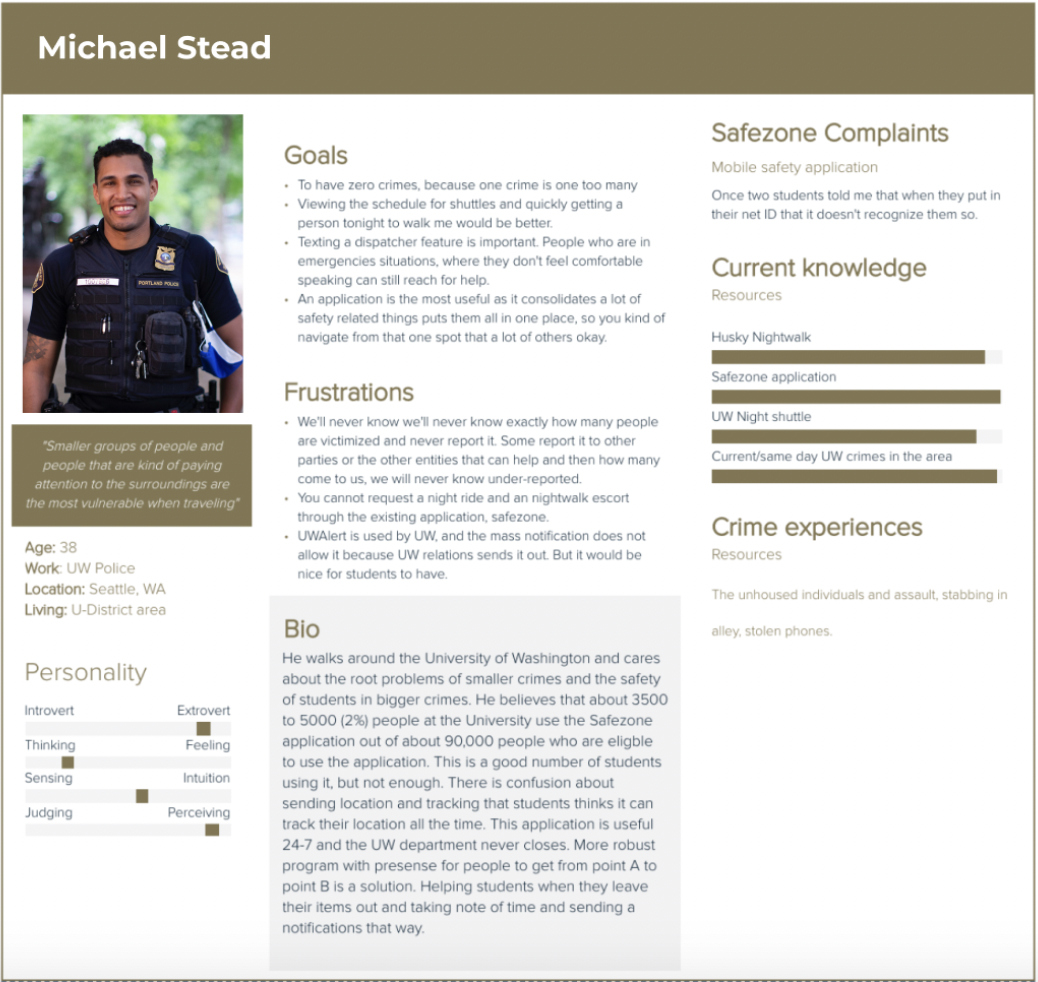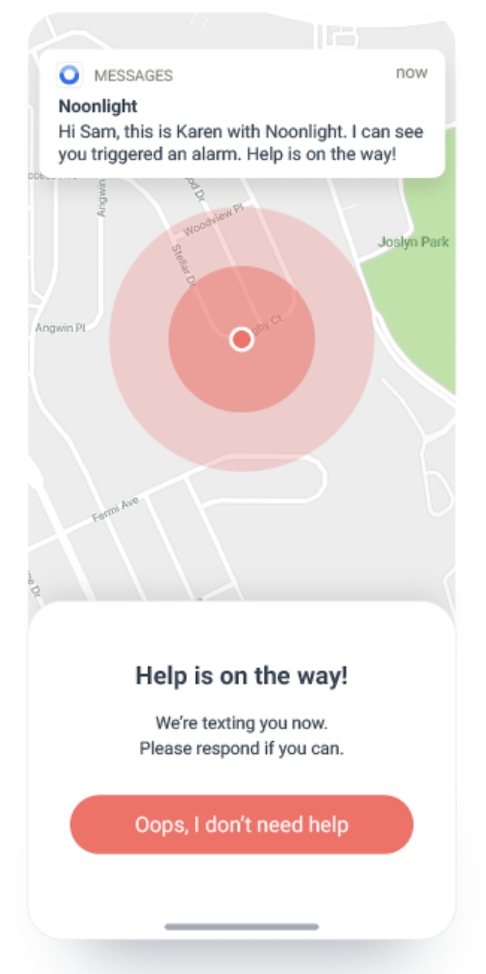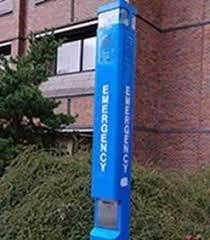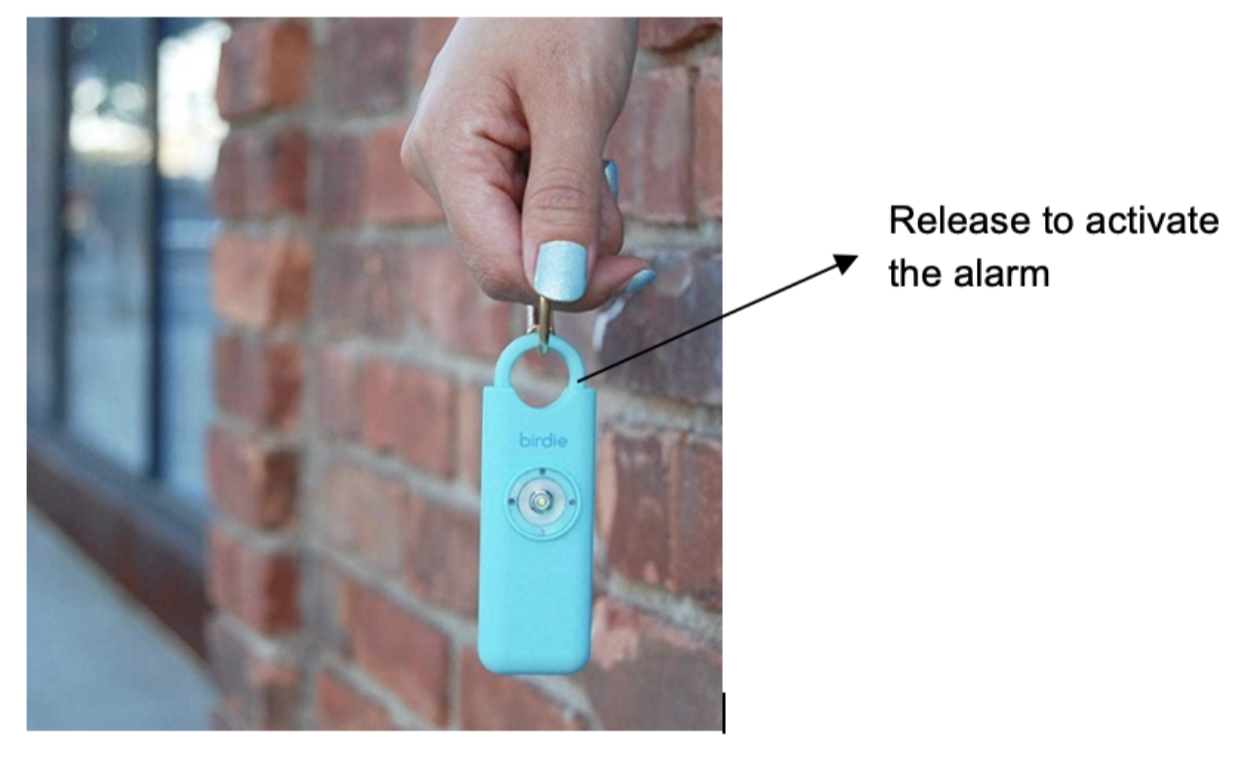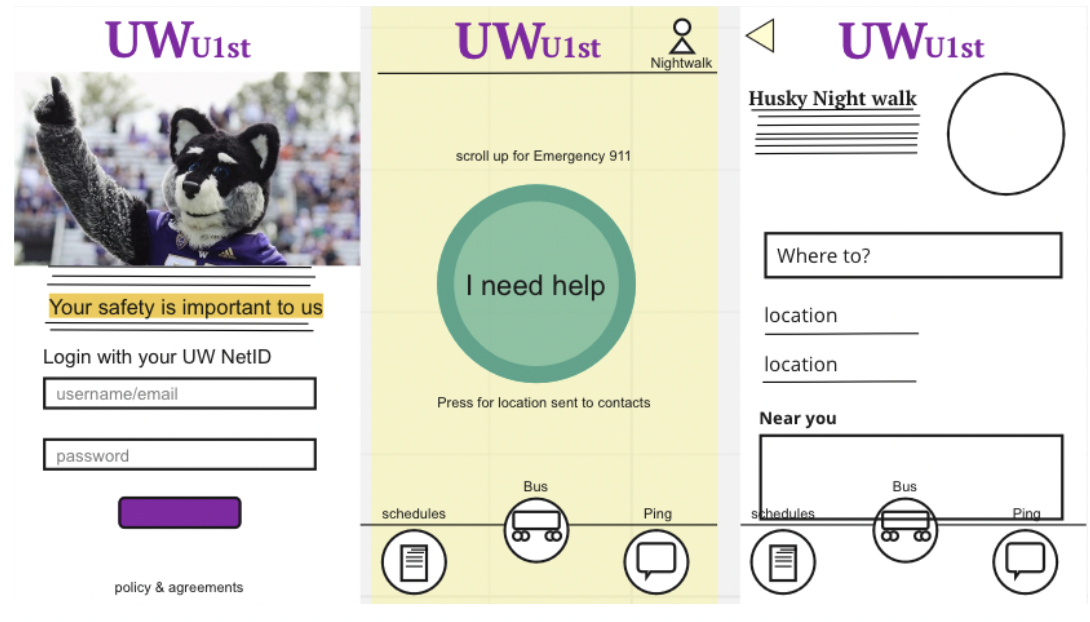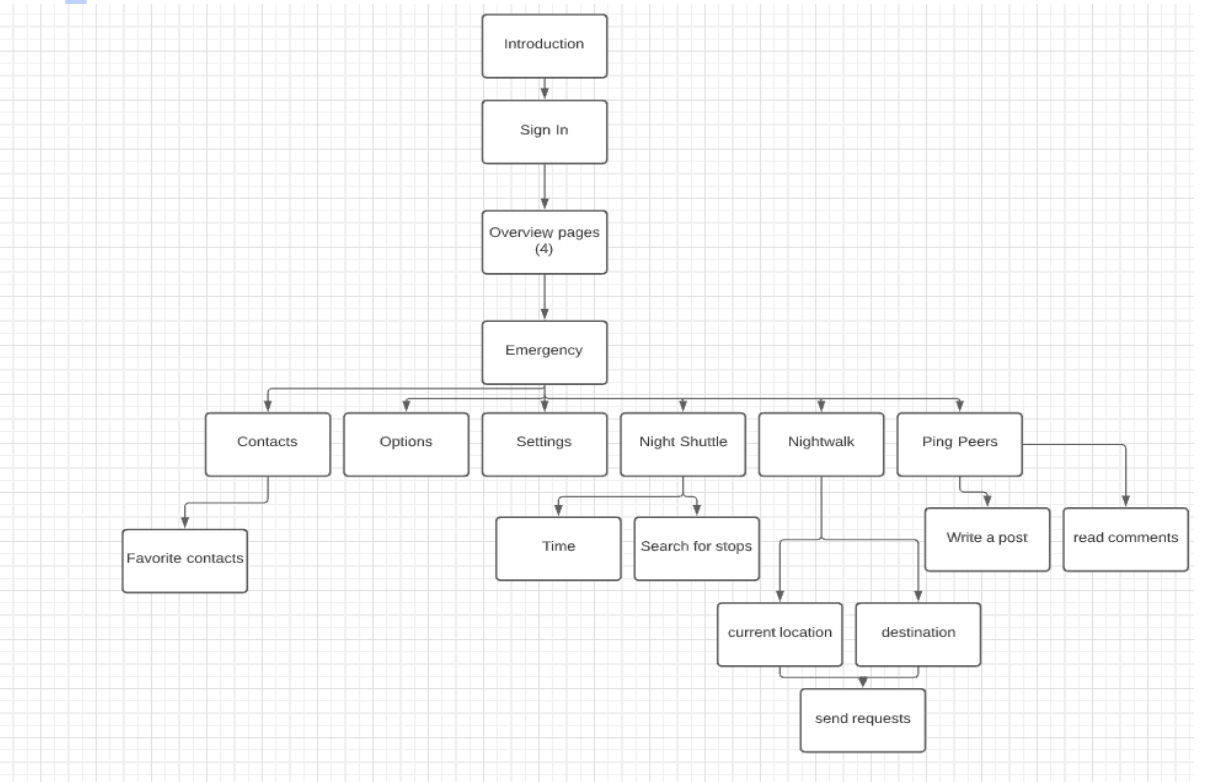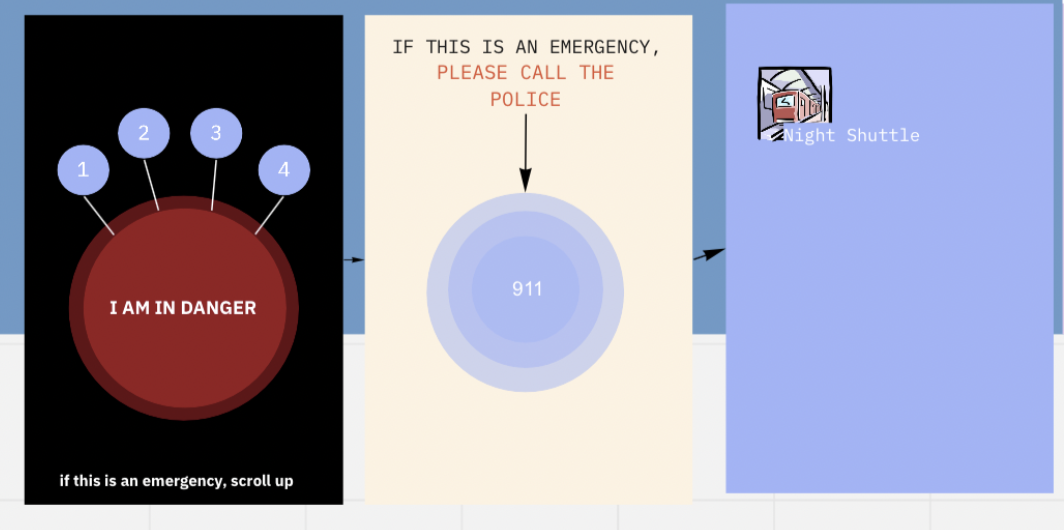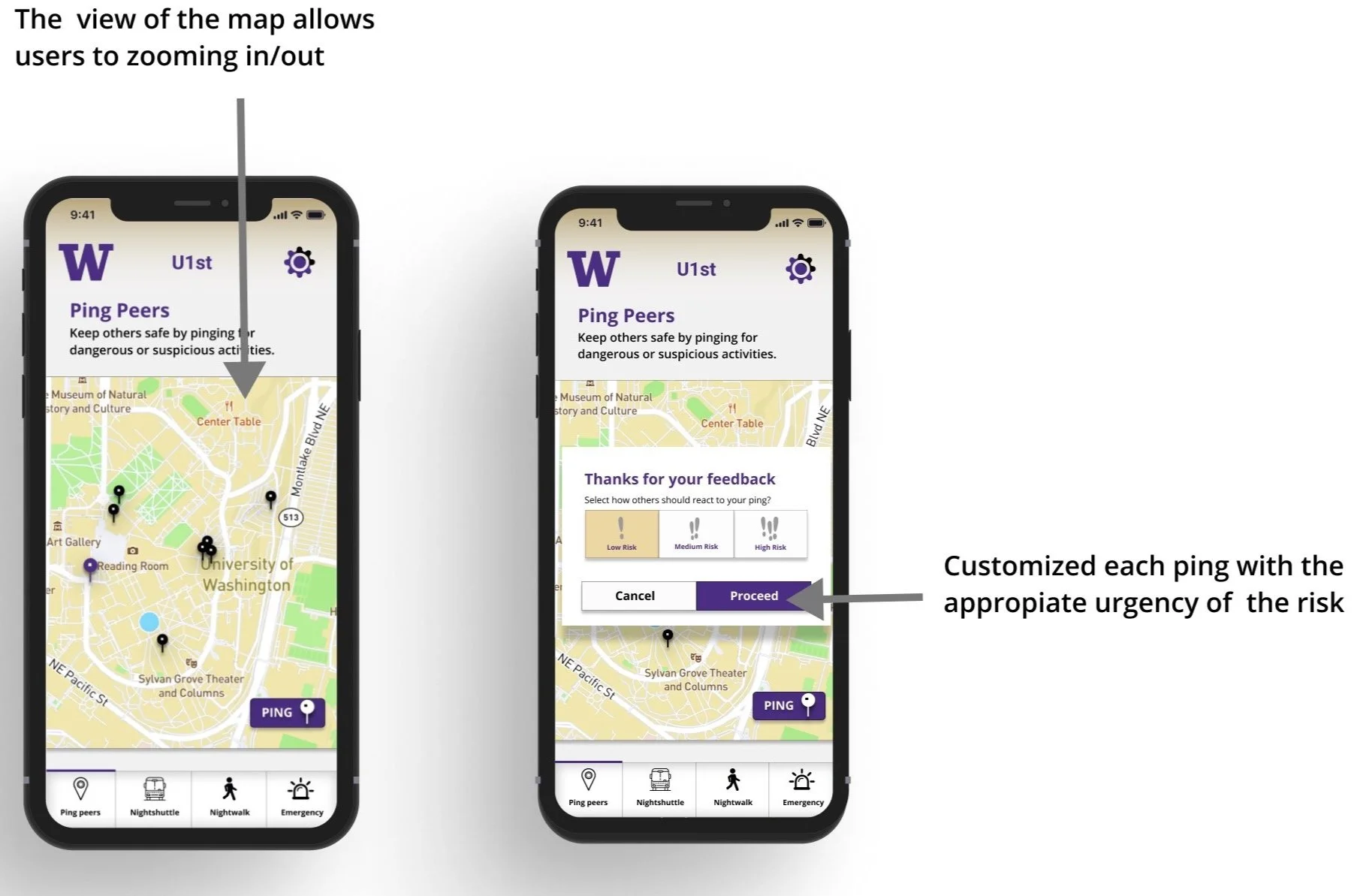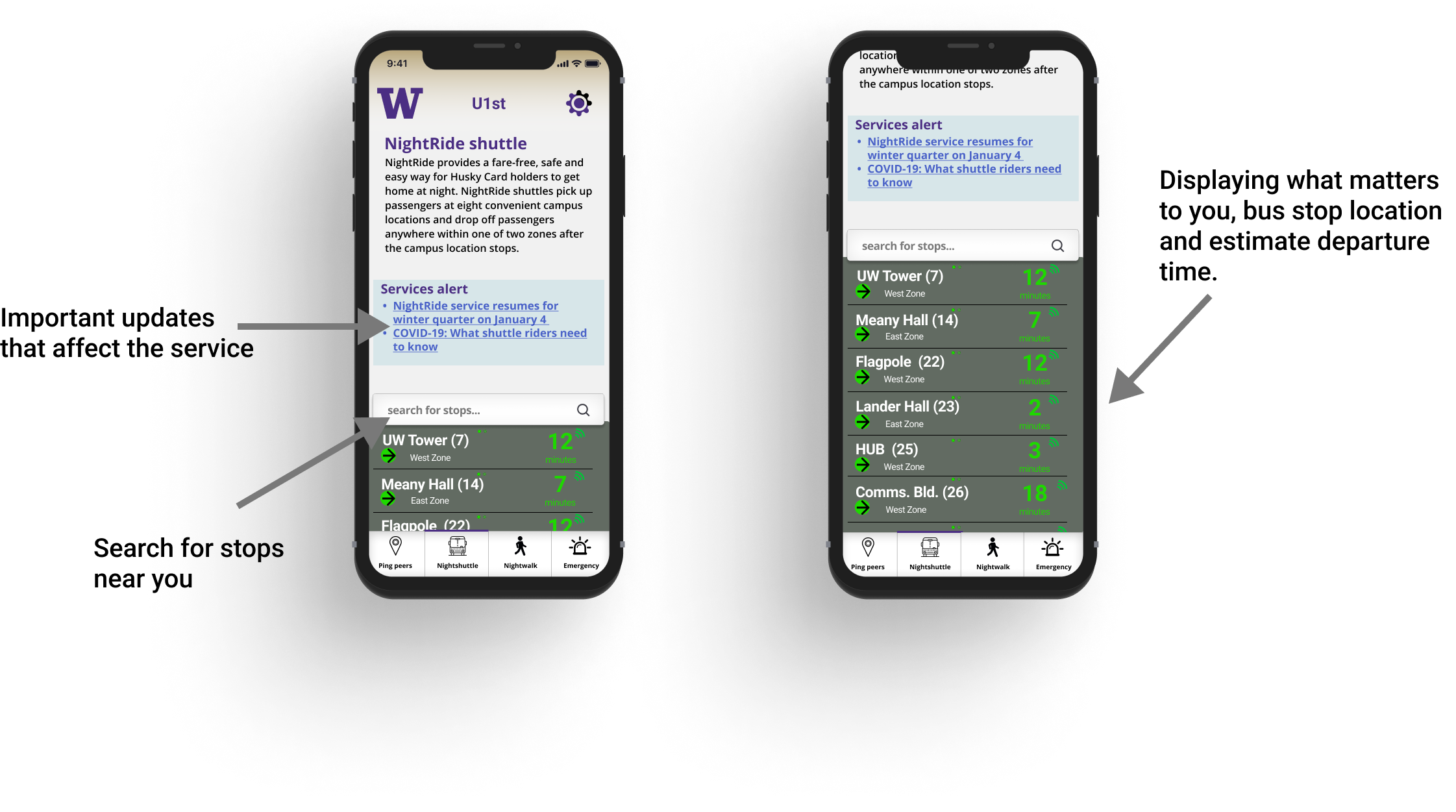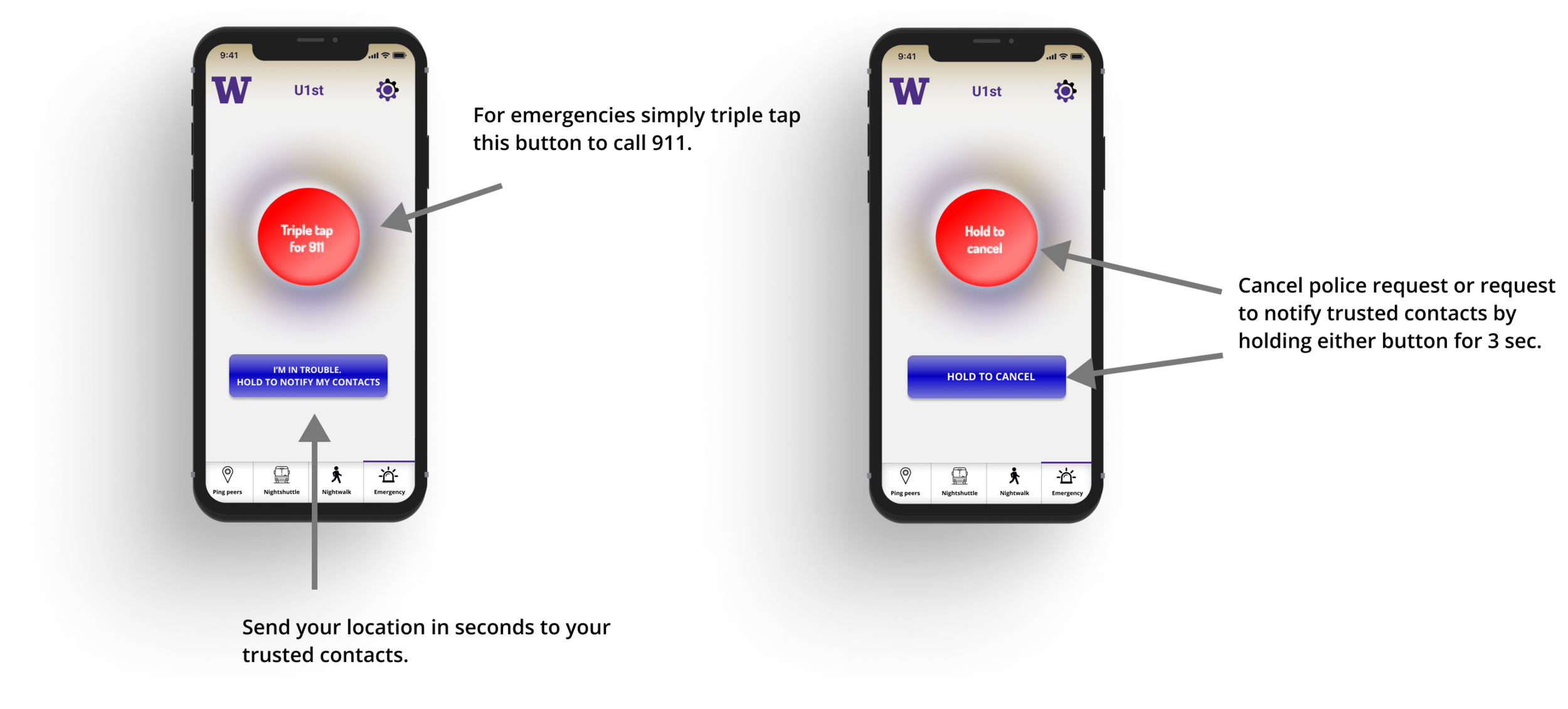
Skills
Research
Sketching, Storyboarding, Wireframing, Prototyping
UX/UI design & Iteration
Problem
Make university safety resources more easily accessible
U1st
Tools
Zoom
Google Forms
Miro
Figma
Background
In my "Intellectual Foundations of Informatics" class, my team had to make a digital solution for a problem. When a friend's friend went missing and was found dead in the Fall of 2021, I realized how unsafe it can be for women to be alone in public. My team, which was also made up of women, felt the same way and wanted to do something about it. We created a solution that not only collected information about the resources available at the university but also provided something new and useful for students who may be in danger while walking around campus.
Challenge
Although the University of Washington (UW) has a system called, “Husky Nightwalk,” where a campus security officer walks with a student at night so they remain safe, often students are not escort to their final destination due to distance, time restriction and the availability of the staff. The application seeks to conveniently and discreetly provide a personal safety service, to help mitigate some of these concerns.
Constraints
U1st was a class project designed by a team of three students with a time constraint of three months.The priority was to ideate a way to help students manage and have quick access to the university resources made to keep them safe while on the campus.
Solution
This is a personal safety application that provides resources like shuttle, escorts, and emergency safety alarms to students at the University of Washington.Students would use this app when they were being followed, attacked, or just felt uneasy.
Using Ping Peers students can let other knwo about suspicious/dangerous activities.
Night shuttle integration reduce the searching time by skipping several clicks around the UW site.
Now, students can easily set pick-up location and destination to request an escort.
Week 1-2 | Understand
To better understand students' experiences traveling around campus at night, we started by creating a survey using Google Forms. The survey was distributed to students in our class, assuming that those taking a class at UW were likely to live on or near the UW campus. We received a total of 12 responses.
Additionally, I conducted five 30-minute interviews with UW police officer and students, one of them had previously been assaulted. All interviews were conducted via Zoom due to the pandemic.
A few highlights from the surveys…
What I learned…
respondents lived around the UW campus.
respondents felt safer walking during the daytime.
Synthesizing research data…
respondents walk alone around campus 1 - 30 times a month and another 8.3% walk alone all the time.
Pain Points
Students who walk alone and are not aware of their surroundings are more likely to be victims of a crime.
Students feel unsafe walking alone and at night time.
Most of the UW police night services, such as night walk and ride sharing end around 2 AM.
Student cannot request rideshare or night walk through the Safe Zone App.
Students don't trust the Safe Zone App because they think the police will be constantly tracking them.
Gain Points
Provide a more convenient and trusted way for the student to access current college safety resources.
Help UW police manage the escort request efficiently and easily.
Create channels of communication where the community can voice the concerns
A way to let others know, such as friends and family, when the student is in an unsafe situation.
Who am I solving for?
We identify two main stakeholders, students and UW officers. Sierra is the main persona and she is especially concerned about walking alone during the night. On the other hand, Michael's persona represents UW police. He deeply cares about students' safety around campus.
The latest most respondents traveled around the U-district alone was at 10:00 pm.
All respondents felt safer walking around campus with others.
Women were more likely to cite a specific incident during which they felt unsafe walking on or around UW.
Women were less likely to feel safe walking around UW campus and surrounding areas alone later in the day than men.
“I avoid walking on the AVE late at night due to the number of crimes that occur there. I would only walk on the AVE if I was with other people but not by myself.”
Week 3 | Sketch
Understanding current solutions…
Observing different solutions across the market that help users manage their safety. I explored three different concepts with great benefits and drawn backs. Below are some of the experiences I felt aligned the best with the problem of safety I was looking to solve: Noonlight, emergency phones, and panic alarm .
Noonlight
A solution that helps in situations where is dangerous enough to call 911. This application is backed up by a team assisting 24/7 by sending user’s information to the police within seconds.
Pros:
It includes a timeline option that a user can input for when they might get into dangerous situations.
Add a safety network to send location, and others details.
Cons:
Text messages is not support.
2. Emergency phones.
tall emergency towers, all across campus, from which students can easily contact UWPD. Located throughout the premises of the UW campus, these emergency phones give immediate access to UWPD outdoors and even in elevators.
Pros:
Easy to use
Visible from a distance
Cons:
For travelers on the UW campus but not U-district.
3. Panic alarm
Panic alarms produce loud sirens and intermittently flash light to create distraction or stop an attack. Some of them offer extra features such as glass breaker and belt cutter.
Pros:
Compact
Inexpensive.
Cons:
No great for preventing the situation from happening.
It is assumed that the attacker would stop after the victim used the personal protection devices.
No further assistance such calling the police or reporting this in any type of way.
We experienced different features such as schedules, buses, ping, and messaging.
After some discussion, we grouped certain information into one such as bus and schedule now are one. This help the user to get bus information faster.
Sitemap
I created a sitemap to organize the information and understand the app’s structure, so it will make it easier to navigate the app. This help to move into prototyping faster.
From the analysis of the competitor, we learned the importance of providing users immediate access to an emergency line. This was easy to implement because users will be using phones already.
Taking into consideration the user research, we implemented an emergency button and trust network to send location when the situation feels uneasy but not necessarily user wants to report to the police.
Visual / Decision
Week 4-5 | Wireframe & Prototype
One of my teammates and I went through a total of two iterations until the final design was ready. I collected feedback from the third teammate and our TA to refine the application. The result is illustrated in this demo.
Features Overview
Ping Peers
This feature allows the users to post messages about what’s going on around campus, so that other users know what to be aware of. This feature makes the app more interactive and facilitates a greater sense of community.
NightShuttle
Night shuttle allow students to access to the university shuttle in a secure, easy and convenient way. By integrating this service into the app students reduce the searching time otherwise they’ll have to do several clicks around the entire app.
NightWalk
Requesting a escort is easier and convenient for those in need. Now, students can send their pick up location and destination to UWPD security officer. In seconds, they’ll be notified so students can easily accept or reject the request. This feature benefits not only the students but it helps UW policy to a more manageable service and reduce the amount of time spend on the phone.
Emergency Button
This unique feature was designed for those situations where immediate danger is around. Students have an option to call the local police near them based on their Geographic location for GPS. Additionally, students can also have the option to notify their contacts of their location with a preset message.
Takeaways
This team project was a valuable learning experience because it allows me to practice Figma intensively. The fact that one of my team members had more experience with Figma, it helps me to learn from her speedily. Also, the ability to sketch quickly is a skill that I want to continue growing. As a next step, I would create a user test plan to refine the design and collect user feedback and satisfaction with this digital product. Some of the success metrics I would use are detailed below.
Next steps
Success metrics
Task completion rate is a metric I would use to measure the web application's success. I would inspect both the high and the low task completion rates.
Net Promotor Score (NPS) is a metric that could also use. I can measure success by user satisfaction with the application and their willingness to share with other peers in their own colleges or others.
Engagement. Gauging the excitement expressed by participants while using the application, I would also measure success based on the desirability of the product.



